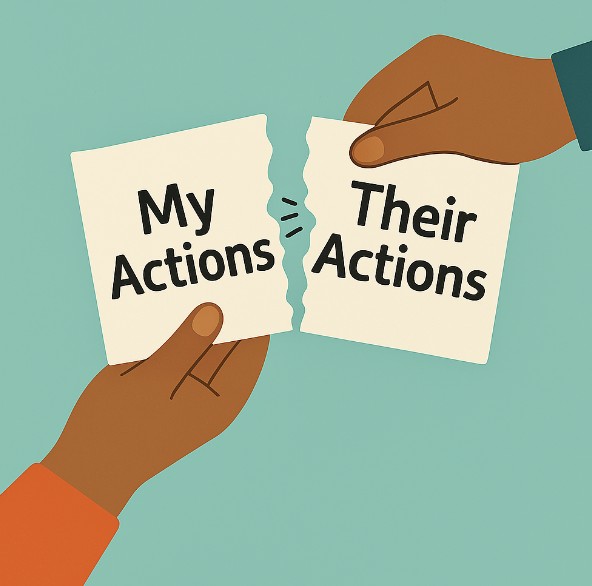- 7 November 2022
- 7311 views
Search

When the Wounds We Didn’t Cause Still Hurt
In my post “19 – Hard Truth” I wrote that we often cause our own pain. But today, I want to explore that more carefully—because there’s a difference between taking responsibility for our actions and blaming ourselves for things we never owned.
Disruption and Doubt
My regular OA meeting was disrupted by a “Zoom Bomber.” He interrupted the speaker to proclaim that OA was a scam, designed to take people’s money, and that it was a cult. I was managing tech that evening, so I removed him from the meeting.
Personally, I was unshaken. I’ve found answers that satisfy my heart and mind when it comes to OA. But later that week, I spoke with another attendee who admitted she was shaken. She was genuinely wondering: Is OA a cult?
We talked for a while, and I tried to stay gentle and let her sort through the questions herself. Afterward, I found myself digging into definitions of cults and comparing them to OA’s principles. I still rejected the Zoom bomber’s claims—but I came across a story that broke my heart.
Painful Misinterpretations: When Recovery Gets Twisted
The story was about a woman in AA who felt she had to be “deprogrammed.” Just after finishing her Fifth Step, she reflected on her history of sexual assault. At some point, someone had told her that if she’d been sober, she wouldn’t have been raped. She took that message to heart, internalized it, and concluded the assaults were her fault.
Abuse Is Never the Victim’s Fault
As a child, I was too scared to say anything about what my grandfather was doing to me. Between the ages of 7 and 10, I had opportunities to speak up—but silence doesn’t equal consent.
Too often, survivors of abuse carry misplaced guilt. We question ourselves: Should I have said something? Should I have done more to stop it? But the truth is simple and unwavering:
Abuse is abuse. It is never the victim’s fault.
What the Steps Teach Us About Responsibility
I don’t believe the Big Book asks victims to own perpetrators’ offenses. The Twelve Steps emerged from a spiritual movement rooted in scripture—and the Bible makes it clear that abuse is not God’s will.
When we reach Step 9, where we make amends to those we’ve harmed, the book affirms:
We are God’s people. We stand on our own two feet—we do not crawl before anyone.
My experience with the Steps is this: they build us up where we need healing and humble us where we’ve caused harm. They do not exist to tear us down or shame us.
The Line Between Self-Reflection and Self-Blame
There’s a delicate line between recognizing how we’ve hurt ourselves and falling into the trap of blaming ourselves for trauma we did not choose.
I am not responsible for the abuse I experienced. But I do cause myself pain when I tell myself I’m terrible or stupid—when I internalize those old lies and mistake them for truth.
Steps 4–9: Finding Honest Responsibility
In working through Steps 4 to 9, I uncovered areas where I had harmed both myself and others. I learned how to take accountability for my own behavior—not for the actions of those who hurt me.
This is the difference between being a victim and living in victimhood.
I had been victimized—but I learned to shake off the chains of being a victim.
May You Find That Same Freedom
I hope you find the kind of support in our rooms that allows you to untangle shame from responsibility, trauma from accountability. You never have to carry the weight of someone else’s choices.
“A wise woman wishes to be no one’s enemy; a wise woman refuses to be anyone’s victim.” —Maya Angelou



Leave Comment